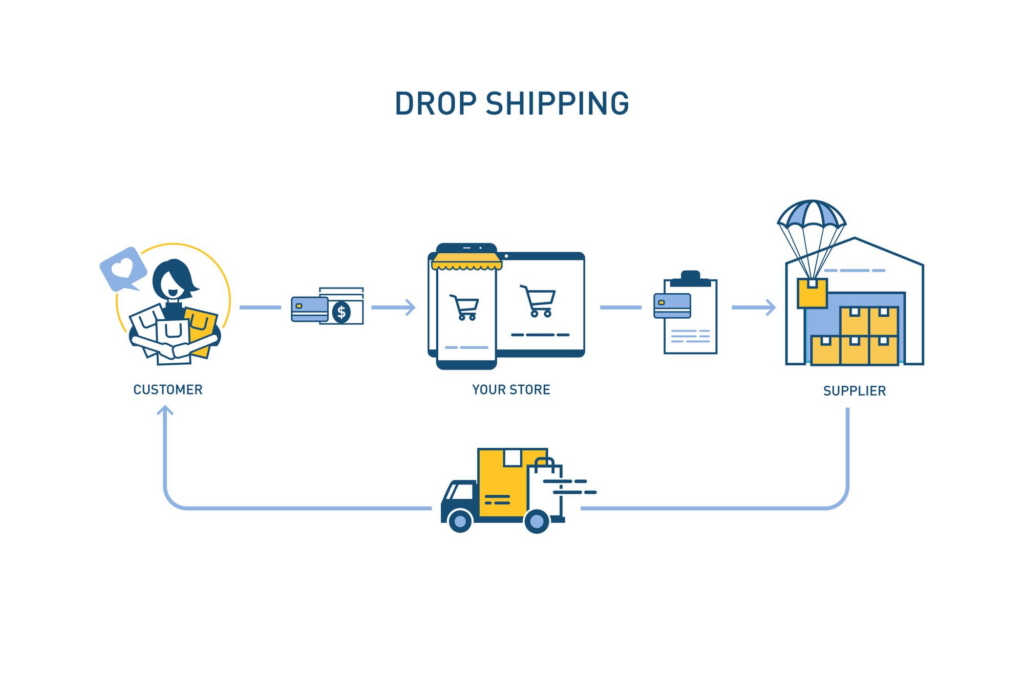What is a Just in Time Inventory Management System? A Detailed Guide for Online Businesses in 2023
Successfully managing your inventory is crucial to operate an online store. But it may also be difficult, costly, and time-consuming. Because of this, businesses worldwide employ various alternative inventory management solutions to reduce their inventory costs and streamline their various warehouse operations. A just in time inventory is a well-liked technique, which, if effectively executed, can reduce inventory costs by 10%, and this money might be put to use for expansion, automation projects, hiring workers, and research & development. The list is endless.
Businesses may better manage their demands for raw materials, manufacturing, and customer orders by using a just in time inventory system. However, for things to go well, the business must have a well-oiled supply chain in place to ensure that everything happens at the precise right time. This article will examine just in time inventory, its benefits and drawbacks, and how it may be used to help you determine if this system will work for you.
- What is Just In Time Inventory?
- Why Should You Utilize Just In Time Inventory Management in 2023?
- How Does Just in Time Inventory Management Work?
- An Example of Just in Time Inventory
- Pros and Cons of Using Just in Time Inventory Management in 2023
- Top Companies and Industries That Utilize Just In Time Inventory Management
- Conclusion: Manage Your Inventory With InventoryLogIQ in 2023
- Just in Time Inventory: FAQs
What is Just In Time Inventory?
Traditional supply chains are replaced with a just in time inventory system, which lowers the overhead expenses of maintaining a warehouse and stocking inventories. With just in time inventory management, you may place orders with suppliers for items or materials in quantities sufficient to fulfil immediate customer demand without carrying extra inventory.
Why Should You Utilize Just In Time Inventory Management in 2023?
A modern cost-cutting tactic that has gained popularity and acceptance is JIT inventory. It aids businesses in minimizing waste, increasing productivity, minimizing mistakes, and maximizing profit. However, due to vast stockpiles of useless goods that cause manufacturing uncertainty and turmoil, businesses frequently suffer losses. Using a JIT inventory management system, businesses may bring manufacturing under better control and cut expenses associated with handling inventory. To cut expenditures on inventory management, the firm can store little stock as needed by using JIT inventory.
As a result, it guarantees less material waste, more productivity, defect-free goods, and complete elimination of waste related to inventory handling. Additionally, it enables companies to do better market and sales analyses, demand forecasting, and inventory forecasting. Businesses utilize a just in time inventory management system to produce goods precisely and cut down on wasteful spending. JIT Inventory is a productive approach created in Japan to reduce waste and increase revenue. It is a technique that increases cash flow and ensures ROI (Return on Investment).
How Does Just in Time Inventory Management Work?
For the just in time model to function, a client must first place an order with the manufacturer. The manufacturer recalls an order with their suppliers as soon as they get the order. After receiving the order, the suppliers give the manufacturer the materials required to fulfil the customer’s purchase. The manufacturer then receives the raw ingredients, assembles them, and sells them to the client. The fundamental JIT inventory steps are as follows:
Step1: Order From a Client
After a business gets an order, a project manager examines the requirements and chooses the materials – along with their quantities – that will be used to construct the product.
Step 2: Purchase Supplies
Next, they make the precise number of purchases of materials required for the order.
Step 3: Manufacture and Deliver the Product
After receiving all the supplies, the manufacturer produces the product and delivers it to the customer.
Step 4: Cycle Maintenance
It is possible when a business has a contract with a client that requires it to renew orders regularly based on a timeframe.
An Example of Just in Time Inventory
A just in time inventory example is as follows: Let’s say your automobile manufacturing company assembles vehicles. You would need to order steel frames to build the chassis and other components, but steel cannot be stored in a warehouse for an extended period due to its susceptibility to rust. Not only does this increase the likelihood that the steel will rust, but it also raises storage costs for steel frames that you may or may not use. As a result, you wait for a client to place an order for the automobile they want to buy before ordering steel from your supplier and using it to make the car’s chassis and assemble the other components.
This is how the JIT inventory system works. For the efficient aspect of this method to kick in, your business needs to be able to deliver the inventory very quickly. A customer who orders a car doesn’t want to wait any longer than necessary for it to arrive. If so, you should utilize an effective inventory management system to acquire the steel components and other essential items and have them delivered to your production facility more rapidly.
[contactus_lilgoodness]
Pros and Cons of Using Just in Time Inventory Management in 2023
Just-in-time operation demands meticulous supply chain planning, and top-notch inventory management software completes the entire process until delivery, improving productivity and reducing room for error because each activity is tracked. A just-in-time inventory management system has the following significant benefits and drawbacks:
Pros
Improves Efficiency
The expenses of acquiring, controlling, and keeping surplus raw resources and inventories are decreased by the JIT approach. This causes an increase in the inventory turnover ratio, which keeps stock from accumulating in your warehouse for too long and becoming outdated. Additionally, you may accept and store supplies in the lowest numbers feasible, thereby decreasing surplus raw material stockpiles. Finally, local sourcing ensures that your suppliers are close to the manufacturing facilities of your business, allowing for prompt delivery and minimizing the need for safety stock.
Mitigates Inventory Waste
A just-in-time approach prevents overproduction, which occurs when the market’s supply of a good exceeds its demand and results in the buildup of unsalable stocks. These unsaleable items become dead stock in the inventory, which increases waste and takes up space. In a just in time system, you only order what you require, eliminating the possibility of building up unnecessary inventory.
Lowers Holding Expenses
Excess inventory can cause your holding expenses to quadruple, making warehousing expensive. Warehouse holding expenses are kept to a minimum in a just-in-time system. You only place an order when a client does, so by the time it gets to you, the item has already been sold, negating the need for long-term storage. Businesses that employ the just-in-time inventory approach can completely scale back or do away with their warehouses.
Enables Control Over Manufacturing
In a JIT approach, the manufacturer controls the demand-pull-based production process. They may immediately increase the production of a product in high demand and decrease the production of those in low need to meet client demand. As a result, the JIT approach is adaptable and able to meet the constantly shifting market demands. For instance, Toyota waits until it receives an order before buying raw materials. Due to maintaining less inventory, the firm has been able to save expenses and swiftly adjust to changes in demand without worrying about current inventory.
Improves Relationships with Clients and Suppliers
Fewer things need to be moved on the shop floor at once when using JIT inventory management. This enables your management to concentrate on streamlining procedures and creating top-notch items. As a result, less defective, higher-quality items increase customer satisfaction and reduce waste. In addition, because suppliers in the JIT manufacturing model ensure the product’s quality, deliveries move straight to production, avoiding delays from inspection.
Companies may be more adaptable by maximizing resources, including people and equipment, and by cutting down on turnaround times, thanks to the dynamic and agile manufacturing process. It enables businesses to devote more time to marketing, sales, and client acquisition rather than dealing with product flaws, surplus inventory, and ambiguous production methods. In addition, it will enable the production plan to schedule work accurately and release machines and equipment for new work orders.
JIT inventory has various advantages, including less rework and greater time, space, and resources for upcoming orders. In addition, companies may enhance the quality and dependability of their products and their relationships with suppliers and consumers by accurately anticipating and predicting demand.
Cons
Relies Heavily On Future Predictions
JIT inventory management necessitates that businesses fully comprehend sales trends and variations. For example, many companies must have more inventory due to seasonal sales to meet rising customer demand. As a result, you must prepare for situations like these and ensure that your suppliers can meet the needs. Since demand can sporadically change, a prediction cannot be relied upon. This may make it harder for your company to satisfy those needs. Because you won’t be able to help your clients in such circumstances, you risk losing customers and money.
Risk of Stock Running Out
With JIT production, you carry less inventory, and this is because you base your stock decisions on demand predictions. If those predictions are erroneous, you won’t have the appropriate quantity of goods accessible to your customers. One of the most frequent problems with production that applies JIT and lean approaches is this one.
Dependence on Suppliers
When you rely on suppliers to fulfil each order, you risk holding up the delivery of items to your clients. In addition, customers could go to a competitor if you didn’t meet their expectations. Because of this, it’s critical to select trustworthy suppliers and build solid working relationships with them to ensure you have access to the supplies you need to satisfy your customers’ requests.
Top Companies and Industries That Utilize Just In Time Inventory Management
Industrial Examples OF JIT Inventory Systems
While other sectors have been using the just in time lean management method for much longer, it has recently been developed and improved. Just in time inventory industry examples include:
Restaurants
The process of preparing food is based on a just in time inventory concept. A chef will purchase meat and produce daily because many of the raw components for meal preparation are not shelf-stable. The morning before the dinner service, the chef must make an educated guess about what the customers will order. At most eateries, food preparation is also done right on time. Only when someone places an order are meals prepared and cooked. This technology makes it easier for eateries to deliver hot, fresh meals to customers. Additionally, it gives the restaurant the most flexibility in using the ingredients it has on hand to fulfil erratic client requests.
Big Manufacturers
Just-in-time production and inventory management systems are employed by many of the largest corporations in the world. These include Dell, Apple, Tesla, and General Motors. In addition, just in time stocking is a strategy used by retailers like Walmart and Target, particularly for seasonal goods.
Clothing and Fashion
An entire industry sector, fast fashion, has been created as a result of just in time processes. For example, chain stores like Zara and H&M don’t place orders in advance for the entire season. Instead, brand-new clothing is created, produced, and sold in record time. As a result, fast fashion companies can stay current with trends that might alter after an Instagram post.
Print on Demand
Even one of the oldest businesses in the world—book printing—has benefited from technological advancements that arrived just in time. The size of a print run doesn’t have to be estimated by publishers anymore. Instead, they may print a book copy once a consumer puts in an order, thanks to print-on-demand technology. As a result, customers continue to obtain their reading material swiftly because binding and printing are automated and done rapidly. In addition, because books may be printed and distributed from places all over the world, near the buyer, printing on demand significantly reduces shipping costs.
Dropshipping
Dropshipping is a type of just in time inventory in the online retail industry. With the dropshipping business model, you wait until a consumer puts an order before buying things from the supplier. The online merchant does not maintain any inventory. Dropshipping outsources inventory management and storage to the dropshipping 3PL provider.
Organizational Examples Of JIT Inventory Systems
Many organizations, but primarily those that employ a manufacturing line or need to maintain a raw material inventory, use this system as an example. Here are a few of the best examples of JIT in use:
Toyota
One of the best-known instances of just in time production simply because it was a pioneer in the efficient use of this concept. At Toyota, raw materials are not transported to the assembly line until after the client has placed the order and the product is prepared for assembly. No pieces are added to the next node during the procedure unless necessary. This minimizes the amount of inventory, which results in cheaper expenses.
Furthermore, by using this method, Toyota can respond to client requests rapidly without worrying about keeping too much inventory or disposing of it. Toyota’s success may be attributed to several things, including that modest quantities of raw materials are stored at various stations to ensure that there is always enough to begin manufacturing any product. For raw materials to be supplied, it is also essential to accurately predict the demand for those resources.
Dell
Another excellent example of a manufacturing process that has shown this approach’s effectiveness is Dell. They use a somewhat distinct strategy in that they help their clients reach their objectives and also offer lower lead times than in most cases. To do this, they bargain with suppliers to hold inventory rather than carry it themselves. By doing this, they may request components with short lead times, which makes it simple for Dell to assemble and ship to consumers. Their technique is mainly successful because of their trustworthy suppliers and the short lead times.
Harley Davidson
After World War II, there was a significant shift in this situation when they switched to JIT after demonstrating a less-than-efficient procedure. By keeping inventory on hand, they could reduce lead times and provide clients with a much more effective service. For example, at Harley-Davidson, inventory levels dropped by 75% after adopting JIT, yet production increased simultaneously. Because the process could no longer hide behind a mountain of expensive goods, they were able to see and address its inefficiencies.
McDonald’s
Except for a few finished goods, fast food outlets like McDonald’s typically have everything they need to build a meal and wait until the customer places an order. As a result, the procedure is so uniform that each time a consumer uses it, they have a similar experience.
Conclusion: Manage Your Inventory With InventoryLogIQ in 2023
Any approach you choose will usually fall somewhere between the just in time or just in case inventory management. After a season, you don’t want to be left holding a lot of inventory that hasn’t been purchased. However, you also don’t want supply chain hiccups to result in empty shelves for you.
Sales may be lost as a result. eCommerce logistics companies should ideally have enough inventory to match demand until the manufacturer’s next order comes in. Additionally, you should retain a backup supply to guard against supply interruptions. Your turnover ratio rises when your stocking levels are optimized. As well, storage costs are reduced. Although it necessitates extensive planning, the Just in Time inventory management model is a suitable operational framework.
Again, this strategy’s cost-efficiency is excellent, but there is little opportunity for error. It is to your organization’s best advantage to collaborate with a reliable third-party logistics provider that can assist you in evaluating your supply chain and putting changes in place for your business flow to migrate to this new framework smoothly.

To improve our clients’ inventory management, we at InventoryLogIQ collaborate with them and provide the tools and services they need. Members of the InventoryLogIQ team are well-versed in just-in-time inventory management and other lean inventory management techniques. We are aware that our success depends on the success of our clients. We can’t wait to work with you to expand our business and yours. We can assist you in:
- Determining your replenishment levels based on how long it takes for your items to travel from the production to the warehouse shelves
- Assign automated triggers whenever stocks are running low
- Providing real-time updates regarding any changes in inventory across fulfillment centers and selling channels
- Grouping your inventory in an organised manner, so the relevant items always get picked
- Reducing the amount of time and effort you spend on inventory management
Suggested Read: What is a Periodic Inventory System?














